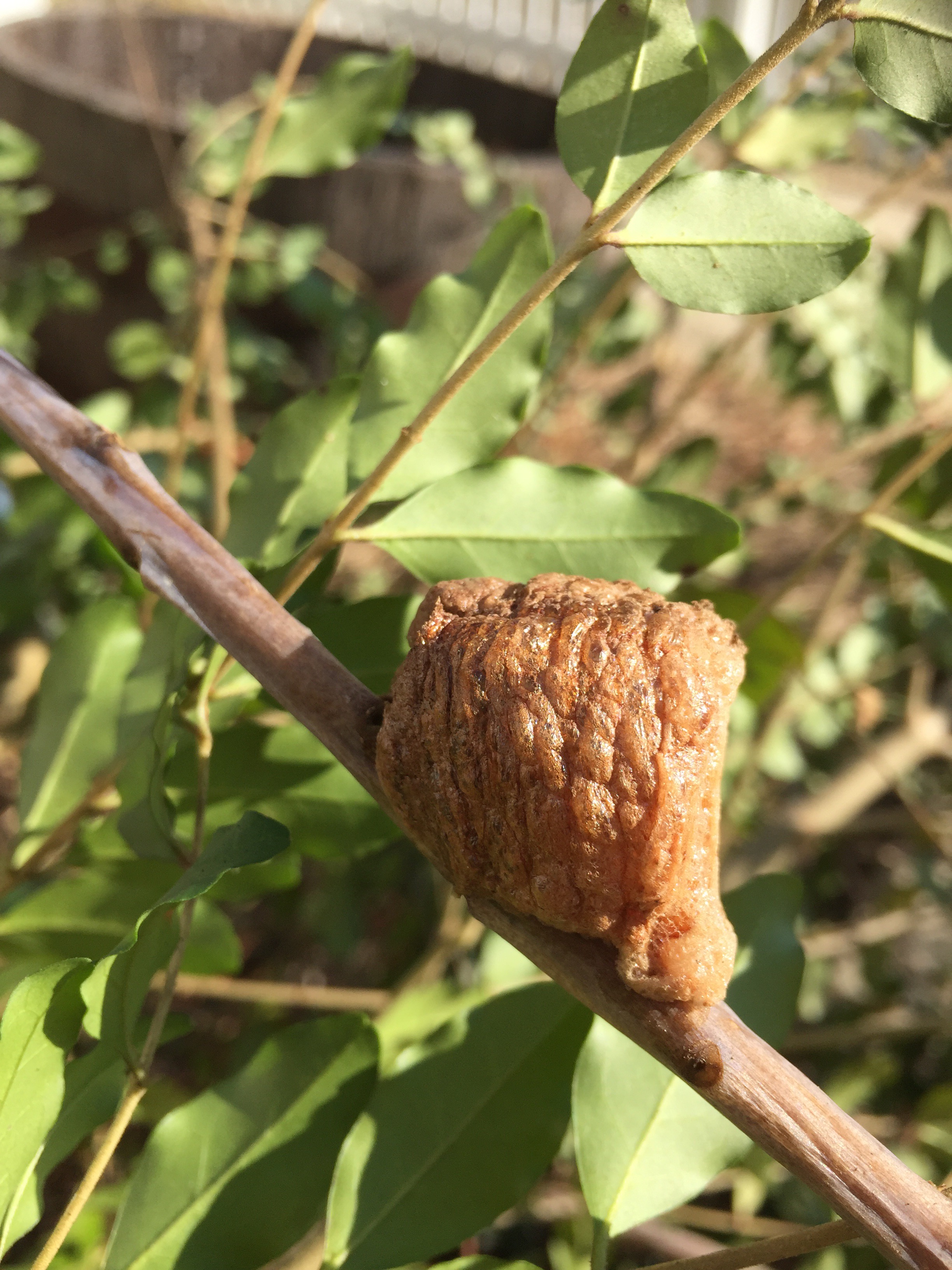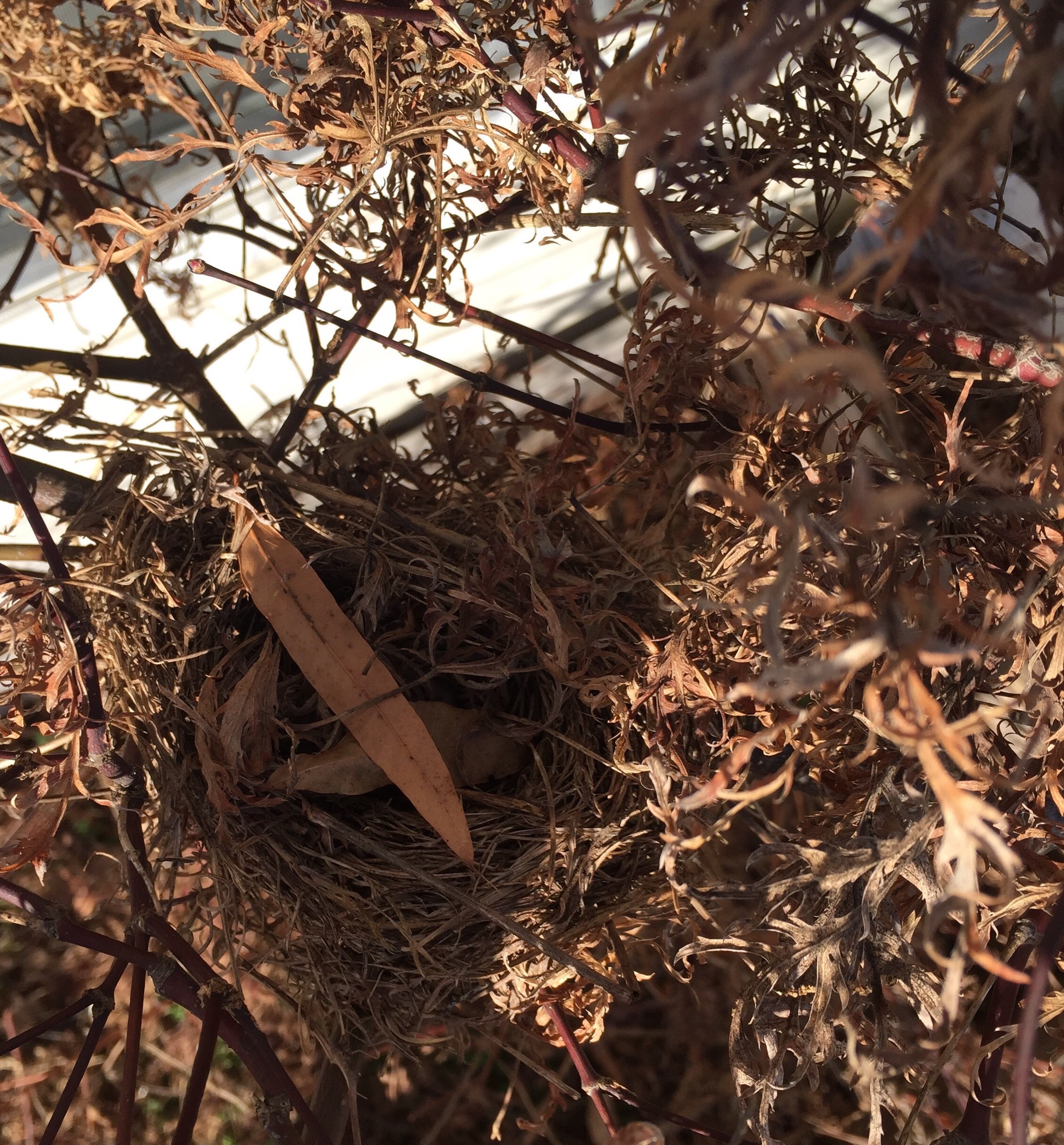As my first major task of the new year I cleaned out my garden, trimming down the hen-and-chick’s tall, hollow stalks; giving the Japanese maple a severe haircut; and trying yet again to kill the only healthy boxwood in the entire neighborhood – the one that insists on growing between my air conditioner and my house.
One of the many, many reasons I do not like the boxwood is that it gives the wasps yet another place to build their nests. I admire wasps in theory, but I do not like them buzzing around my garden, holding me hostage to fear. When they first started visiting my yard, before they actually moved in, they would hang out in the sunny patch right in front of my door, or buzz up loud as jumbo jets to peer into my bedroom window. This did not leave a very good first impression. Since they’ve started nesting they actually have become less obnoxious, but I still like to encourage them to nest on the other, uninhabited, side of the pond. So when I saw little papery pods on the hen-and-chick I gave a long suffering sigh and assumed it was those wasps again, trying to over winter. It wasn’t until I was stuffing all the rest of the yard debris into trash bags, and realizing just how many pods there were, that it occurred to me they might not belong to wasps at all. After all, bees also overwintered in gardens too. There had to be dozen of other very nice, mild creatures that needed warm places to stay in these cold, dreary days. So as soon as the yard was cleaned, and the bags were dumped, and lunch was devoured, I looked them up. With amused horror I present to you an ootheca of a tenodera sinensis, or Chinese praying mantis.

Yes. It’s an egg case. Each one can apparently hold between 10-400 eggs, which is a large factor into why I don’t feel too bad tossing them. There were well over ten of these babies in my small yard alone – just the idea of 4,000 miniature warriors swarming all over my front walk is enough to make me squirm a bit. Other factors to consider: the tenodera is not native to Maryland and some think it threatens to push out other species of mantis. They’re also big enough, as adults, to eat frogs (no!) and hummingbirds (I’m not the only one that finds this scary, right?). Of course, all these excuses aside, they are considered a beneficial insect and, too, it’s not a good idea to get into the habit of eliminating things just because they give us goosebumps. Still, the large likelihood that some pods missed my pruning and remain safely attached to the lavender, or rosemary, or maple tree makes it hard for me to feel guilty.
I do feel bad about being found so ignorant of my own little piece of dirt – I discovered a bird’s nest in the maple tree while pruning that I had no idea existed, even though the tree is so close to my front window its practically part of my living room. I’ve vaguely known, and have been happy to know, that the number of insects in my yard has been increasing over the past few years (most obvious in the number of pill bugs and slugs I discovered this spring). I saw a praying mantis or two near summer’s end and thought nothing of them beyond a happy remembrance of childhood past. I didn’t realize how much they’d had made themselves at home here. I want my garden it be a place of life, to be safe and inviting for most “creatures great and small.” But I have never thought through what it means to share my yard, or taken the time to sit and visit with all the new faces moving in. Great big tasks, like clearing up the yard, look excellent on the to-do lists, but where do we put all the little tasks we must first do to ensure the great ones are done to best effect?

